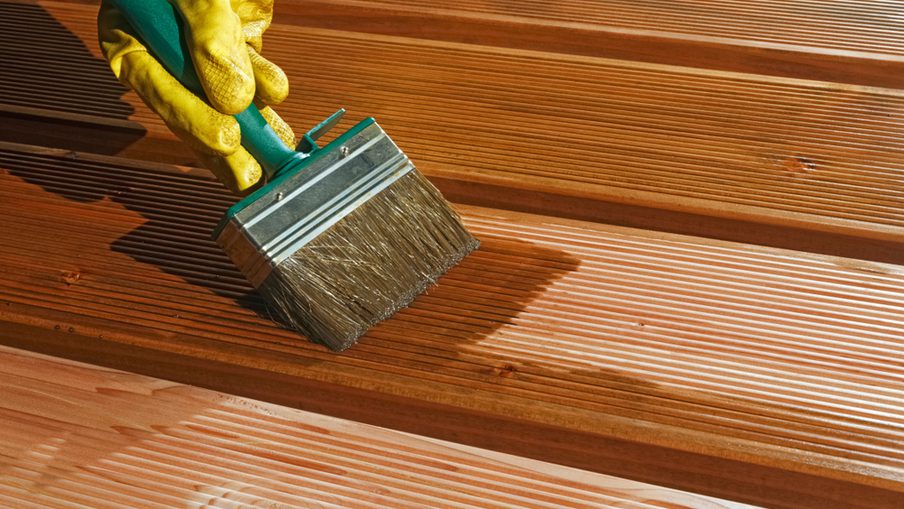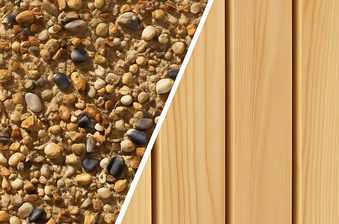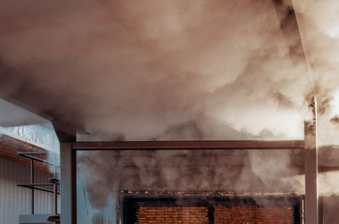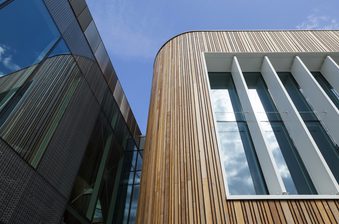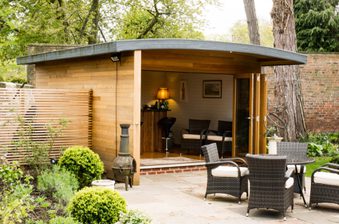Douglas fir (Pseudotsuga menziesii) is a stunning timber species for outdoor projects like cladding, fencing and decking. You may also know it as Douglas spruce or Oregon pine.
It is one of those special timber species that produces natural chemical compounds – 'extractives' – which help to protect it largely from decay. Plus, with an average dry density of 540kg/m³, Douglas fir defies its softwood status with exceptional resistance to bumps, knocks and abrasions.
Thanks to its excellent natural durability, it can actually be left to weather naturally. However, moisture and UV will eventually cause the timber to take on a silvery-grey colour after around six months. After this, you may begin to see some level of surface mould build up.
This can be offset with a quality, non-film-forming treatment. There are many, many products on the market for this, which we would group these into three categories, depending on desired appearance and level of protection: transparent, semi-transparent or a solid-colour.
Transparent stains – for a the grey look, with good protection
Colourless, transparent preservatives result in very minimal change in immediate appearance, allowing the wood to naturally turn grey over time whilst providing good protection against structural damage caused by moisture, like black spots, splitting and cracking.
A product we'd recommend that falls into this category is Owatrol H4 Wood. It is completely clear, so will have no immediate impact on the colour of your Douglas fir. Your wood will age gracefully and slowly achieve the on-trend, natural grey look.
These types of products are usually silicone free, so fantastic if you’re wanting to create a natural, sustainable space. The weathered, grayscale appearance that eventually results from transparent treatments is exceptionally popular with outdoor enthusiasts wanting a space that is 'back to nature'.
Water-repellent preservatives don’t usually last as long and typically requirie recoating every couple of years. Be sure to check the product manufacturer’s guidelines on reapplication.
P.S.: like the idea of grey wood, but don't fancy waiting at least six months? You might want to look at something like SiOO:X. This innovative wood protection system helps to speed up the greying process, whilst sealing the timber and preventing uneven weathering.
Semi-transparent stains – for strong protection that showcases natural beauty
As the name suggests, semi-transparent (or semi-solid) oils can be used to subtly alter the colour of the wood. They provide a higher level of environmental protection and require less frequent reapplication.
A quality semi-transparent finish can actually enhance your Douglas fir, helping its natural, wild and characterful grain pattern to ‘pop’ – and is why we’re big fans of these types of finish.
When shopping around for a quality stain for your Douglas fir, be sure that the product is non-film forming. This means it won’t flake or peel.
Within the semi-transparent stain category, there are:
- Oil-based products: Such as Owatrol Textrol HES. Available in a range of tints, from virtually clear to charcoal, you’re able to add a degree of customisation to the appearance of your Douglas fir project. By penetrating the wood, it provides deep, long-lasting protection and doesn’t form a film.
- Water-based products: Such as Owatrol Aquadecks. This similarly penetrates the wood to seal and protect it without forming a film. You can choose from a number of different shades available (including honey, movingui, teak and even graphite grey). As it’s water-based, it is seen as more environmentally friendly.
Reapplication times for these types of finishes typically range from 2-4 years, but be sure to check the manufacturer’s guidelines.
Solid-colour stains – for maximum protection and customisation
If you don’t mind sacrificing much of Douglas fir’s warm, characterful good looks and you’re seeking the most protective type of finish with the lowest requirement for reapplication, then a solid, opaque finish might be up your street.
Now we’ve got to admit that we’re not huge fans of these types of treatments, especially on a species as naturally beautiful as Douglas fir, when much of its appeal is the result of wild grain.
That said, solid-colour finishes offer robust, long-lasting environmental protection – as well as the opportunity to completely take control of the colour and appearance of the wood, perhaps as part of a bold design.
Owatrol produces a wide range of solid-colour stains that can be used to customise the colour of your cladding. Some types can still allow you to maintain the wood’s original grain pattern to an extent.
The need for a maintenance coat differs depending on the product chosen and exposure to the elements, but you’re usually safe for at least 6 years.
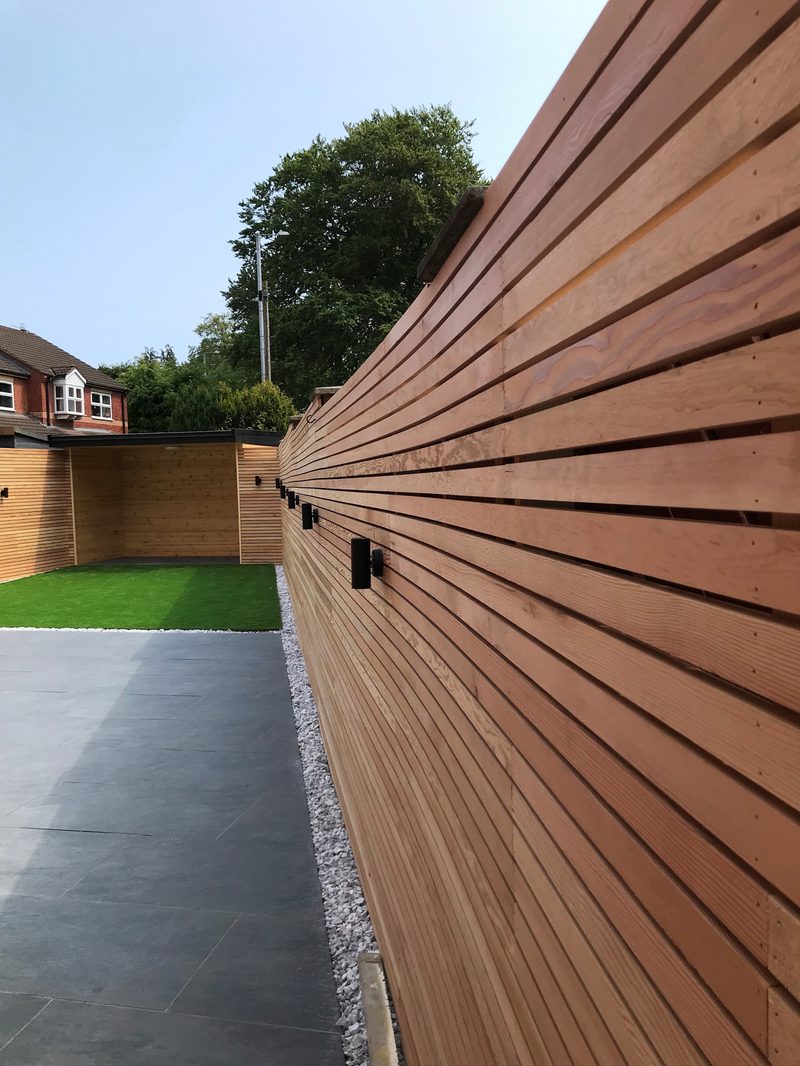

How do I apply a finish or treatment to my Douglas fir?
Treatments are best applied with a quality large, soft bristle brush on a mild, clear day, but you can still achieve decent results with a roller, pad, spray or drip. Using a brush almost always takes longer, but we’d say it’s worth the time investment to guarantee an even, smooth application.
Make sure the wood is initially dry when applying your chosen finish. You might want to add another layer after a certain amount of time specified by the product instructions (be aware that many types of finish, like Owatrol Aquadecks, are intended to be applied wet-on-wet and should not be allowed to completely dry between applications).
The treatment process can differ for solid-colour stains. Prepare the wood with a primer coat before applying the topcoat. If the wood requires two topcoat applications, be sure to allow the initial topcoat to cure as per the manufacturer’s instructions; this can be 3–4 hours.
Before applying any finishes to new (not old) Douglas fir, you might like to apply some Owatrol Aquanett to prepare the fir for treatment, although this isn’t strictly necessary.
Also, if you’re treating a new Douglas fir deck, cladding or fencing project, we’d recommend waiting around 2–3 months after installation before applying the finish – or, of course, you can just let it weather naturally.
What about restoring, treating and maintaining older Douglas fir?
A few years after installation and treatment, you might notice your wood’s treatment wearing slightly thin. If your cladding, fencing or decking is still in good structural condition, give it a gentle clean with warm, soapy water and a sponge or cloth on a clear, mild day to remove any dirt.
Once clean and dry, be sure that any existing finishes and oils are cleared – a treatment of Owatrol Net-Trol can brighten, restore and neutralise the wood, preparing it for fresh treatment. Then, you can reapply your chosen maintenance coat – a transparent, semi-transparent or solid-colour finish as per the manufacturer’s guidelines.
How long does Douglas fir last outside?
In a fairly regular climate with occasional maintenance, Douglas fir can provide over 30 years of service. It all depends on how heavily exposed your wood is – wind, rain and even salty sea air can cause your wood to deteriorate faster.
Got a project in mind?
We stock a wide range of Owatrol woodcare finishes, as well as cladding, fencing and decking in many beautiful, durable timber species – including, of course, Douglas fir! All of our timber cladding is machined to profile on site from kiln dried stock.
Whether you’re an architect, contractor or DIYer, our team pride themselves on providing top-notch timber products with first-rate customer service. To get started, drop us a message through our website contact page, by phoning 01765 640 564 or by emailing sales@duffieldtimber.com.
